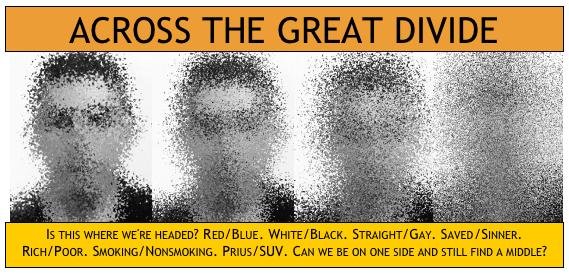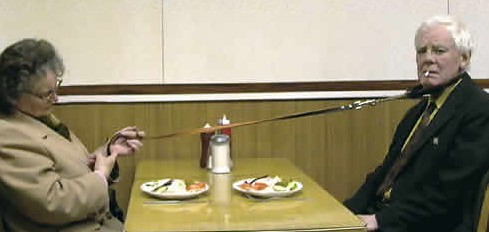Genocide, after all, is an exercise in community building. A vigorous totalitarian order requires that people be invested in the leaders' scheme, and while genocide may be the most perverse and ambitious means to this end, it is also the most comprehensive. In 1994, Rwanda was regarded in much of the rest of the world as the exemplary instance of the chaos and anarchy associated with collapsed states. In fact, the genocide was the product of order, authoritarianism, decades of modern political theorizing and indoctrination, and one of the most meticulously administered states in history.
–Philip Gourevitch, We wish to inform you that tomorrow we will be killed with our families
As countless regimes have shown, for evil to be committed, it is first necessary to deny the humanity of the victim, then, to sanitize the evil act. Perhaps an individual evil-doer can perform such mental distortions without specific language. But evil committed of the people, by the people, or for the people must be given a name. Preferably, one we can speak without choking on our shame.
Vermin. Gooks. Pigs. Jungle bunnies. Cockroaches.
Terrorists.The Final Solution. Discipline. Ethnic cleansing. Selling cabbages (collecting a 50-Rwandan franc — then about 30 cents —bounty for severed Tutsi heads).
Extraordinary rendition."Extraordinary rendition" sounds like a classical music critic's phrase. How perfect for certain clandestine purposes, using an effete-sounding term to describe a brutal practice! It's like talking about Schoenberg to the country & western crowd. Who would even listen?
It may be all you got out of the Alberto Gonzales confirmation hearings was "torture"... "First Latino"... "condoning torture"... "Mexican-American"... "enabling torture"... "Latino-American"... "torture memo"... "discriminating against my fine Latino friends." If so, you should know that "extraordinary rendition" involves seizing foreigners — such as suspected terrorists or those with information about terrorist plans — and transporting them for interrogation to countries where torture may or may not (wink, wink) be employed to quickly extract information.
We're not just talking years of confinement at
Guantanamo Bay, here. US-conducted renditions also involve destinations such as Egypt, Morocco, Syria and Jordan, all cited for human-rights violations by our own State Department. Some subjects disappear, and others, like
Maher Arar, have been released and are
telling their story.
If I may play William Safire for a moment, "extraordinary" indicates going beyond the usual or established use. Generally understood as "an interpretation or performance of a piece of music or drama," rendition seems to have been chosen for another meaning: "the act of translating something into another language." In this case,
torture.
Perhaps the true meaning of rendition is closer to its root,
render: "to purify or extract something by melting, especially to heat solid fat slowly until as much liquid fat as possible has been extracted from it, leaving small, crisp remains." If you have been anywhere near a rendering plant, you cannot forget the stench.
Outsourcing TortureAltough coverage of the practice has cropped up rather frequently over the past year, it has not received such lucid, in-depth attention as presented in Janet Mayer's excellent
New Yorker piece,
Outsourcing Torture:
The Bush Administration, however, has argued that the threat posed by stateless terrorists who draw no distinction between military and civilian targets is so dire that it requires tough new rules of engagement. This shift in perspective, labelled the New Paradigm in a memo written by Alberto Gonzales, then the White House counsel, “places a high premium on . . . the ability to quickly obtain information from captured terrorists and their sponsors in order to avoid further atrocities against American civilians,” giving less weight to the rights of suspects. It also questions many international laws of war. Five days after Al Qaeda’s attacks on the World Trade Center and the Pentagon, Vice-President Dick Cheney, reflecting the new outlook, argued, on “Meet the Press,” that the government needed to “work through, sort of, the dark side.” Cheney went on, “A lot of what needs to be done here will have to be done quietly, without any discussion, using sources and methods that are available to our intelligence agencies, if we’re going to be successful. That’s the world these folks operate in. And so it’s going to be vital for us to use any means at our disposal, basically, to achieve our objective.”
Mayer reports that, according to an early CIA architect of renditions, they were governed by a legal process that required the CIA’s legal counsel to review each case and sign off on every proposed operation. However, renditions were pursued out of expedience—“not out of thinking it was the best policy,” said the CIA agent.
Since 9/11, renditions appear to have become less extra- and more ordinary. But as Mayer points out:
Perhaps surprisingly, the fiercest internal resistance to [degrading treatment of suspects] has come from people who have been directly involved in interrogation, including veteran F.B.I. and C.I.A. agents. Their concerns are as much practical as ideological. Years of experience in interrogation have led them to doubt the effectiveness of physical coercion as a means of extracting reliable information. They also warn that the Bush Administration, having taken so many prisoners outside the realm of the law, may not be able to bring them back in. By holding detainees indefinitely, without counsel, without charges of wrongdoing, and under circumstances that could, in legal parlance, “shock the conscience” of a court, the Administration has jeopardized its chances of convicting hundreds of suspected terrorists, or even of using them as witnesses in almost any court in the world.
We've seen these fears materialize in the lack of successful prosecutions of terror suspects. As another expert quoted by Mayer says, once a detainee’s rights have been violated, “you absolutely can’t” reinstate him into the court system. “You can’t kill him, either. All we’ve done is create a nightmare.”
The Hastert-led House considered
legalizing extraordinary rendition within the bill implementing 9/11 Commission recommendations (rendition was not one of them), but the provision was removed once it came to light. A
counter-move is under way to outlaw the practice, but it hasn't attracted a great deal of support.
Meanwhile, the recently published
The Torture Papers compiles the "so-called ‘torture memos’ and reports which US government officials wrote to prepare the way for, and to document, coercive interrogation and torture in Afghanistan, Guantanamo, and Abu Ghraib."
Some of the documents were
reported on when originally released last year, including the comments of reviewers such as Donald Rumsfeld, who queried, "I stand for 8-10 hours a day. Why is standing [as a counter-resistance technique] limited to 4 hours?" But the 1284-page book reproduces all the documents sequentially, with notations, unfolding the sheer difficulty — and ultimate absurdity — of maintaining a morally defensible position while seeking to coersively extract information.
In theory, torture achieves its aims only when it becomes unbearable. In practice, it is the victim, not the torturer, who defines torture. So how can limits really work?
As the editors of
The Torture Papers put it in
"Interrogating Donald Rumsfeld" — "For an administration that, in one of its legal memos, had already put the power to define torture into the hands of the torturer, it wasn't so hard to be against acts of 'torture' — as long as the dictionaries were theirs."
Mayer's article cites consequences of US policy that predate the Bush administration — for example, helping Albanian intelligence capture Islamic militants and transport them to Egypt. "On August 5, 1998, an Arab-language newspaper in London published a letter from the International Islamic Front for Jihad, in which it threatened retaliation against the U.S. for the Albanian operation—in a 'language they will understand.' Two days later, the U.S. Embassies in Kenya and Tanzania were blown up, killing two hundred and twenty-four people."
What is it about trafficking in torture that we still don't understand?




